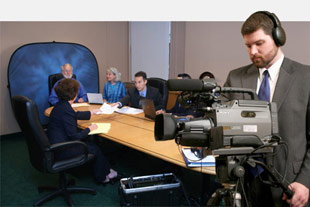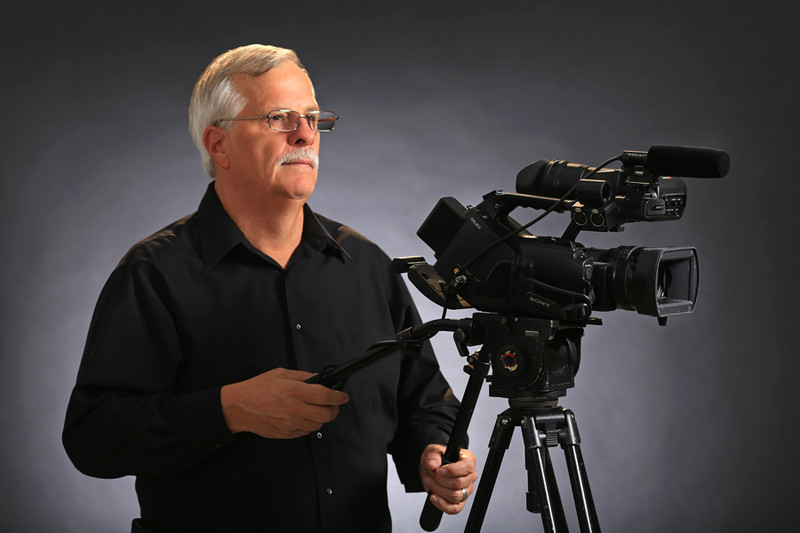Understanding the Role of Legal Videography in the Courtroom
Understanding the Role of Legal Videography in the Courtroom
Blog Article
Why Legal Videography Is Vital for Accurate Court Recordings
The function of legal videography in court settings can not be overstated, as it serves as an essential tool for preserving the integrity of court documents. The effects of incorporating lawful videography right into standard courtroom practices raise important questions concerning its more comprehensive impact on the legal system.
Significance of Visual Evidence
In the world of lawful proceedings, the significance of visual evidence can not be overemphasized. Aesthetic evidence serves as a powerful device in establishing facts, affirming statements, and enhancing the general clarity of a situation. This kind of proof, that includes photos, video clips, and layouts, can offer a tangible context that spoken descriptions often do not have, therefore providing courts and courts a clearer understanding of the circumstances bordering a case.
In addition, visual proof aids in the retention of information. Human cognition is inherently visual, and individuals are more likely to keep in mind and comprehend details presented in a visual format. In the court, this can be crucial, as compelling visual evidence can persuade point of views and enhance the narrative presented by legal representatives.
Furthermore, making use of aesthetic proof can decrease misunderstandings and uncertainties that commonly arise from spoken exchanges. By giving a straight representation of occasions, aesthetic evidence helps to eliminate subjective interpretations and fosters a more objective evaluation of the facts. The integration of visual evidence into legal process not just reinforces the stability of the judicial process but also boosts the chance of attaining a simply result.
Catching Non-Verbal Cues
Utilizing innovative videography techniques can substantially boost the capture of non-verbal hints during legal procedures. Non-verbal communication, including facial expressions, body language, and eye contact, plays a vital function in communicating emotions and intents that may not be clearly specified in verbal testimony. legal videography. Lawful videography employs high-def electronic cameras and critical angles to make certain that these subtle cues are videotaped with clearness and precision
The ability to evaluate non-verbal behavior can supply important context to declarations made during court sessions. A witness's hesitation or confidence can be translated via their pose or gestures, potentially influencing the jury's assumption of integrity. Moreover, making use of close-up shots can assist concentrate on an audio speaker's expressions, permitting a more nuanced understanding of the statement.
Moreover, incorporating numerous camera angles can create an extensive view of interactions, highlighting characteristics in between celebrations entailed. This complex approach not only improves the accuracy of the court record however additionally aids in preserving the integrity of the judicial process - legal videography. Ultimately, catching non-verbal hints through legal videography fosters a richer, more complete representation of courtroom proceedings

Enhancing Statement Integrity
The dependability of testament can be substantially bolstered with the use of top notch legal videography. Video recordings offer as an objective tool that captures not only the talked words of witnesses but likewise the subtleties of their shipment, consisting of tone, pacing, and emotional expressiveness. This complex documentation supplies a clearer visit our website understanding of the witness's reputation and intentions, which can be essential in lawful procedures.
Moreover, legal videography minimizes the potential for false impressions that may emerge from written records alone. When jurors can observe a witness's disposition and body movement along with their testament, they are much better furnished to evaluate the credibility and reliability of the evidence provided. This aesthetic context can enhance the testimonial narrative, making it more compelling and credible.
Furthermore, the existence of a video recording can prevent prospective inconsistencies in testament. Witnesses might be extra mindful in their declarations when they recognize they are being videotaped, bring about even more exact and genuine accounts. On the whole, high-quality legal videography boosts the honesty of testament, making certain that the court has accessibility to a full and genuine depiction of the realities as communicated by the witnesses.
Supporting Appeals and Reviews
Legal videography plays an important role in supporting allures and testimonials by supplying a detailed visual record of courtroom proceedings. This visual documentation captures not just the talked words of witnesses and lawyers however likewise the nuances of body movement, intonation, and courtroom dynamics. Such components can be essential in comprehending the context of statements and debates offered.
In the appellate process, where the focus gets on errors of regulation and procedural justness, a video clip document can work as a crucial device for appellate courts. It makes it possible for courts you can look here to examine the original trial context, ensuring that choices are based upon a total understanding of the process. The capability to aesthetically evaluate the demeanor of witnesses or the communications in between parties can disclose insights that composed records may neglect.

Furthermore, lawful videography can assist in clarifying uncertainties in testaments or step-by-step rulings, thus enhancing the basis for an allure. By offering a trustworthy, unbiased account of what taken place in court, lawful videography not just supports the integrity of the legal process however likewise encourages all events entailed to make informed decisions regarding their situations.
Simplifying Court Room Procedures
Enhancing court effectiveness, lawful videography enhances procedures by supplying prompt accessibility to visual records of procedures. This innovation enables courts, attorneys, and juries to review important statement and evidence, making sure that all parties have a clear understanding of the case. By recording the subtleties of spoken and non-verbal communication, videography enhances the record, making it much easier to comprehend the context and weight of statements.

In addition, video clip recordings can help with remote engagement in hearings, enabling better flexibility in scheduling and involvement, which is particularly useful in intricate cases involving several stakeholders.
Verdict
In conclusion, legal videography plays a crucial function in making sure exact court recordings by supplying essential visual evidence that captures both verbal and non-verbal communication. This practice enhances the reliability of testaments, sustains appellate weblink reviews, and streamlines court room procedures. By promoting a detailed understanding of court dynamics, legal videography eventually adds to extra equitable judicial end results, strengthening the integrity of the lawful system and promoting educated decision-making.
Report this page